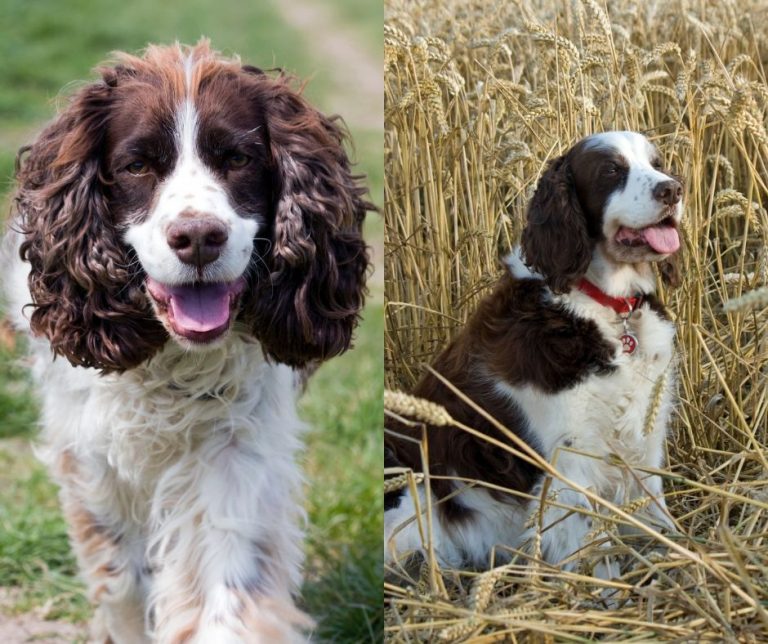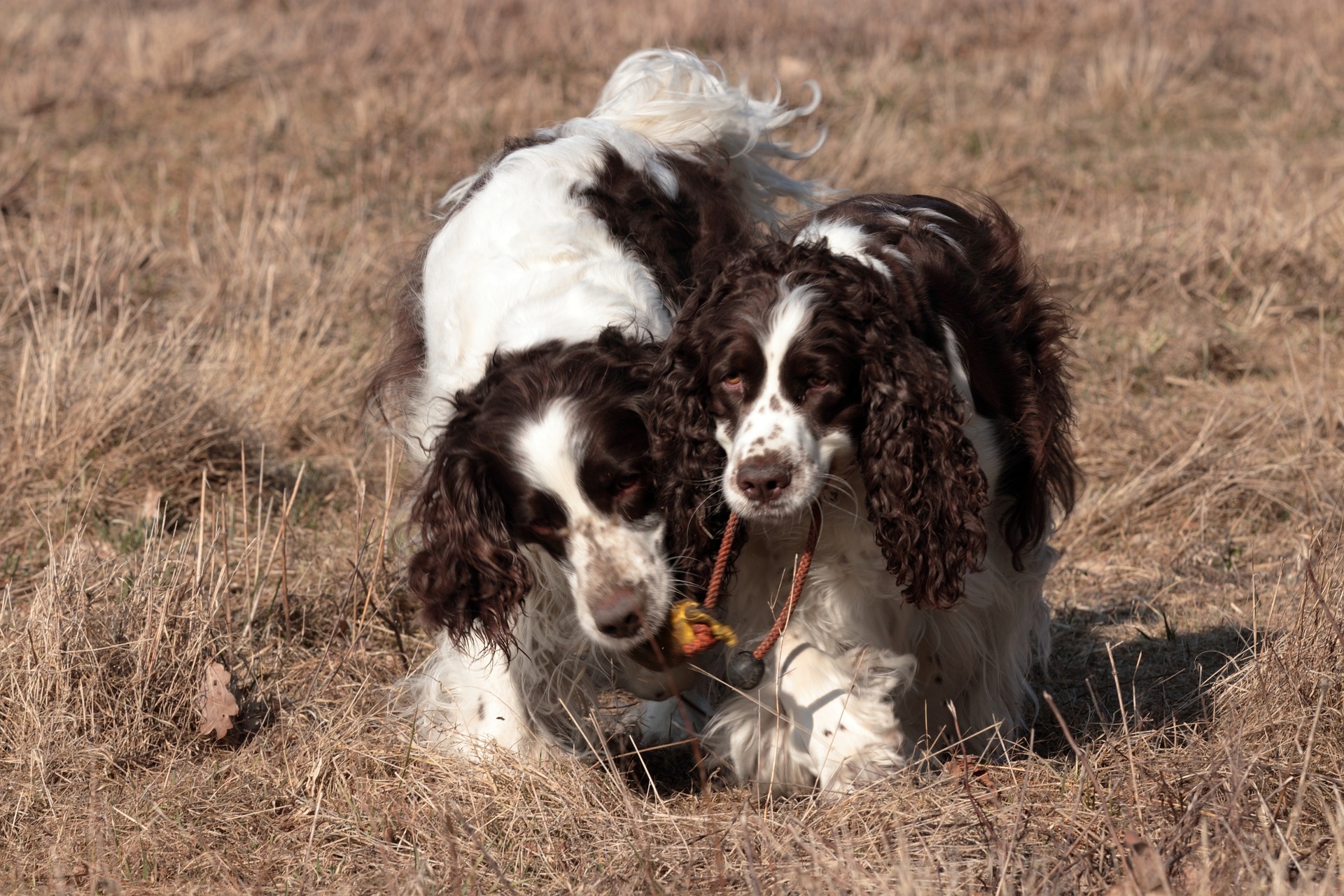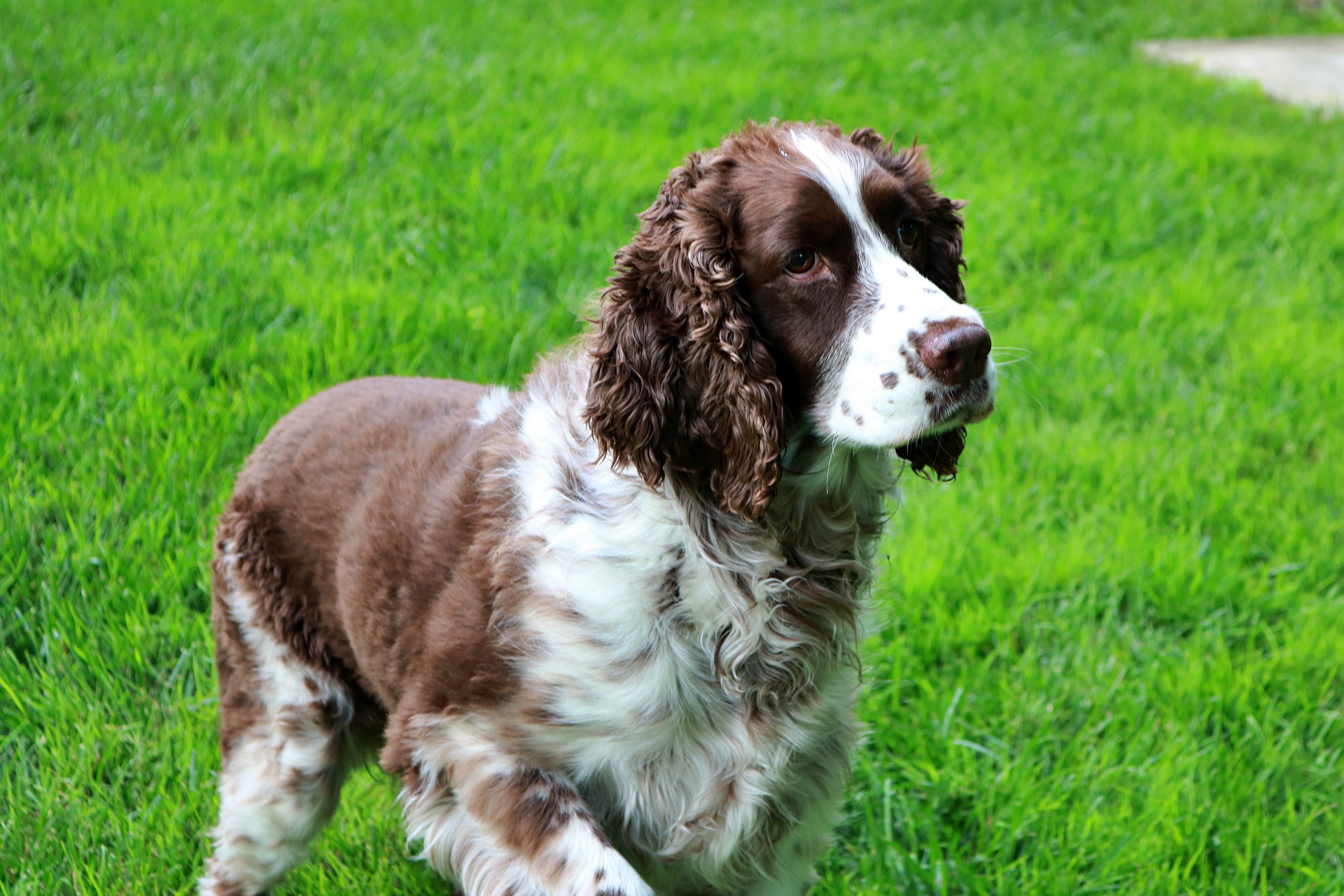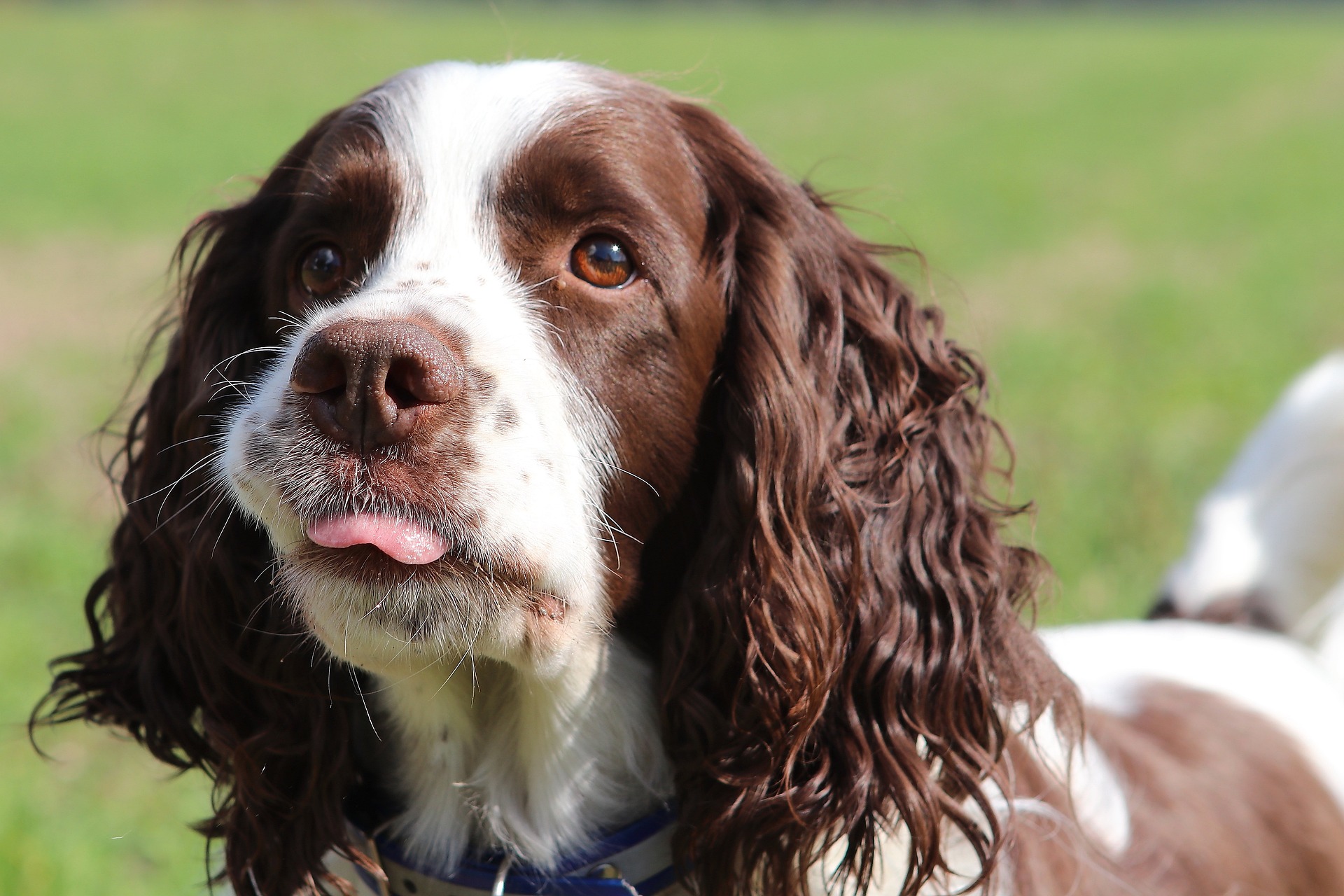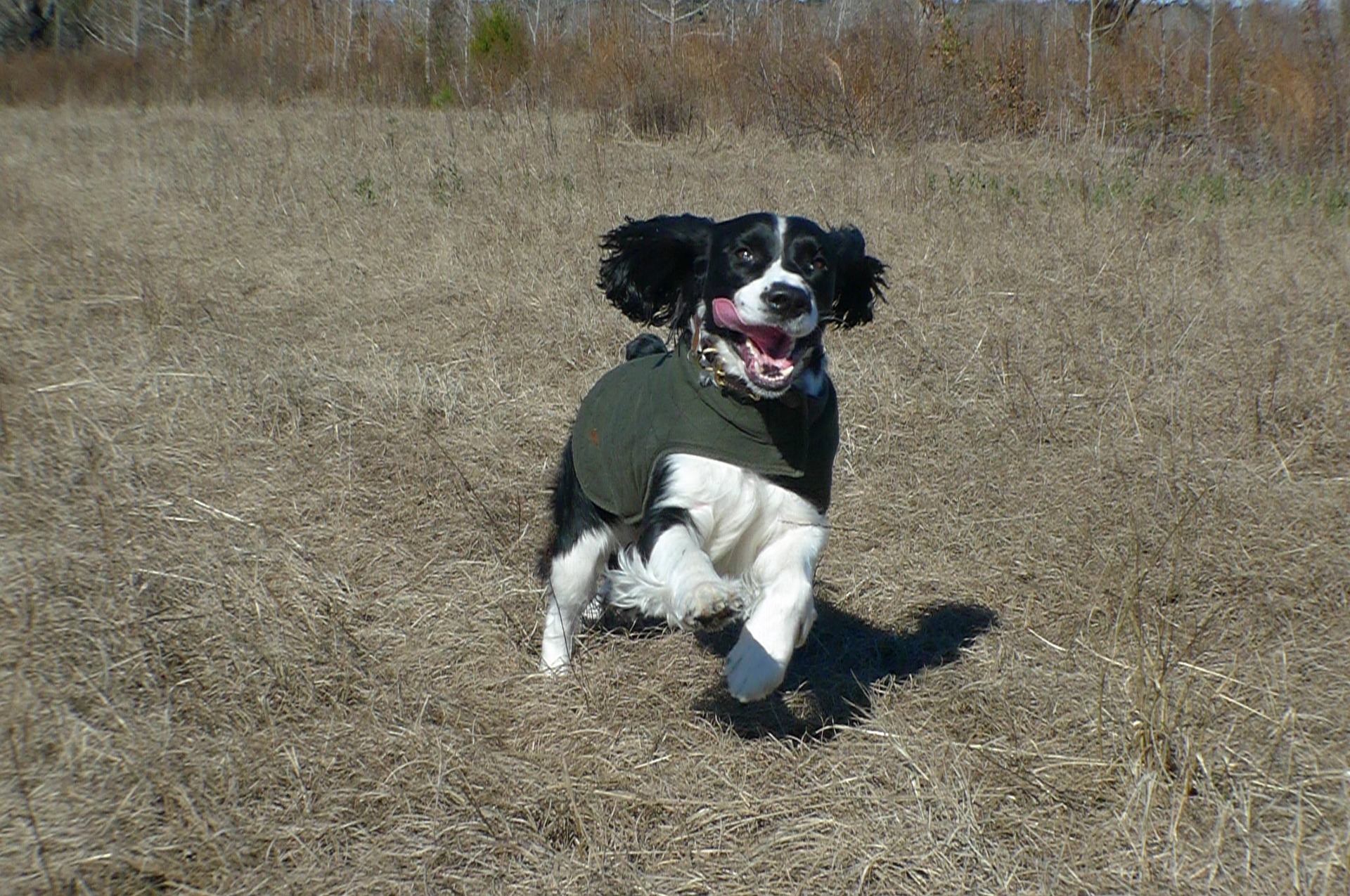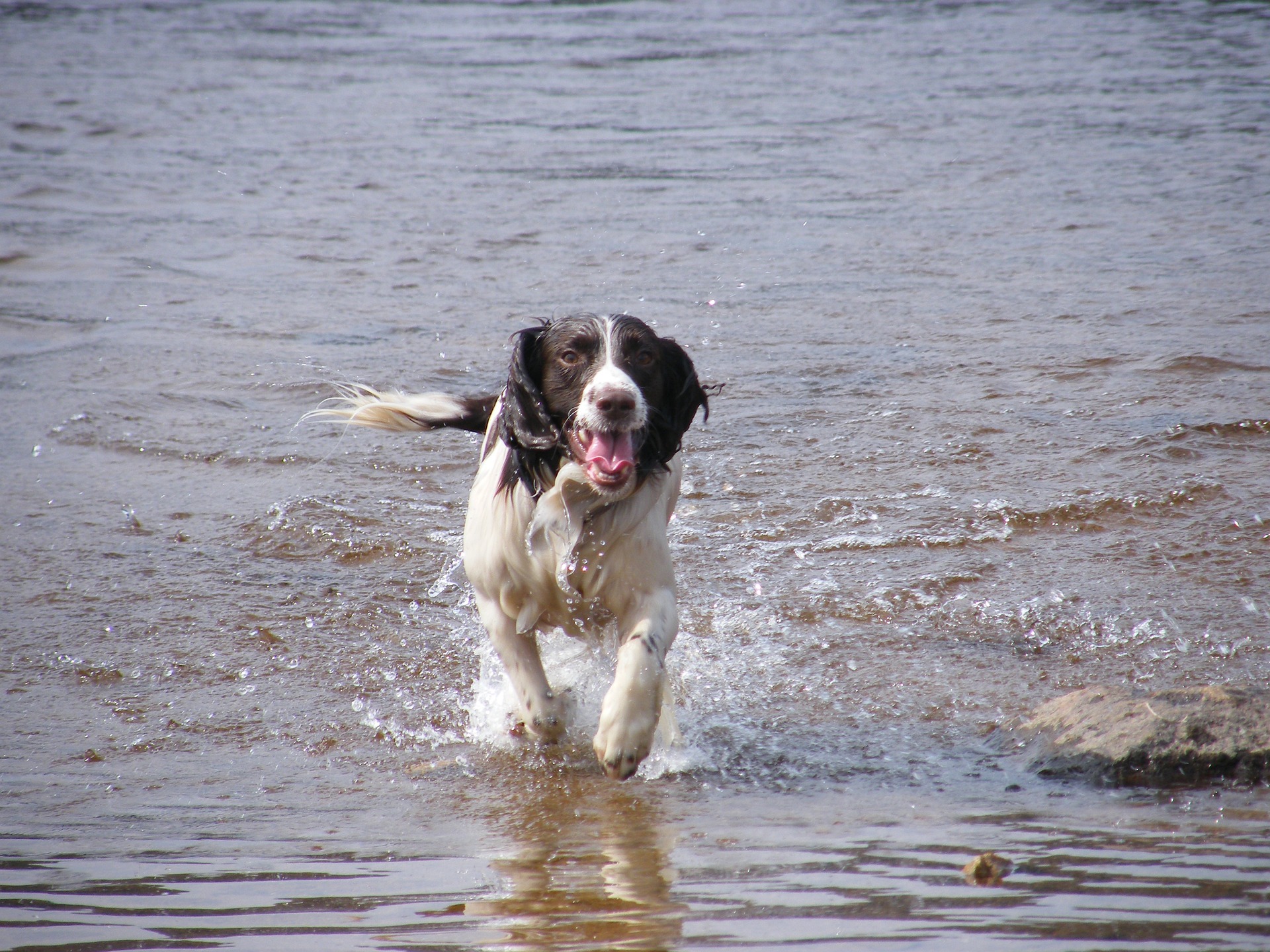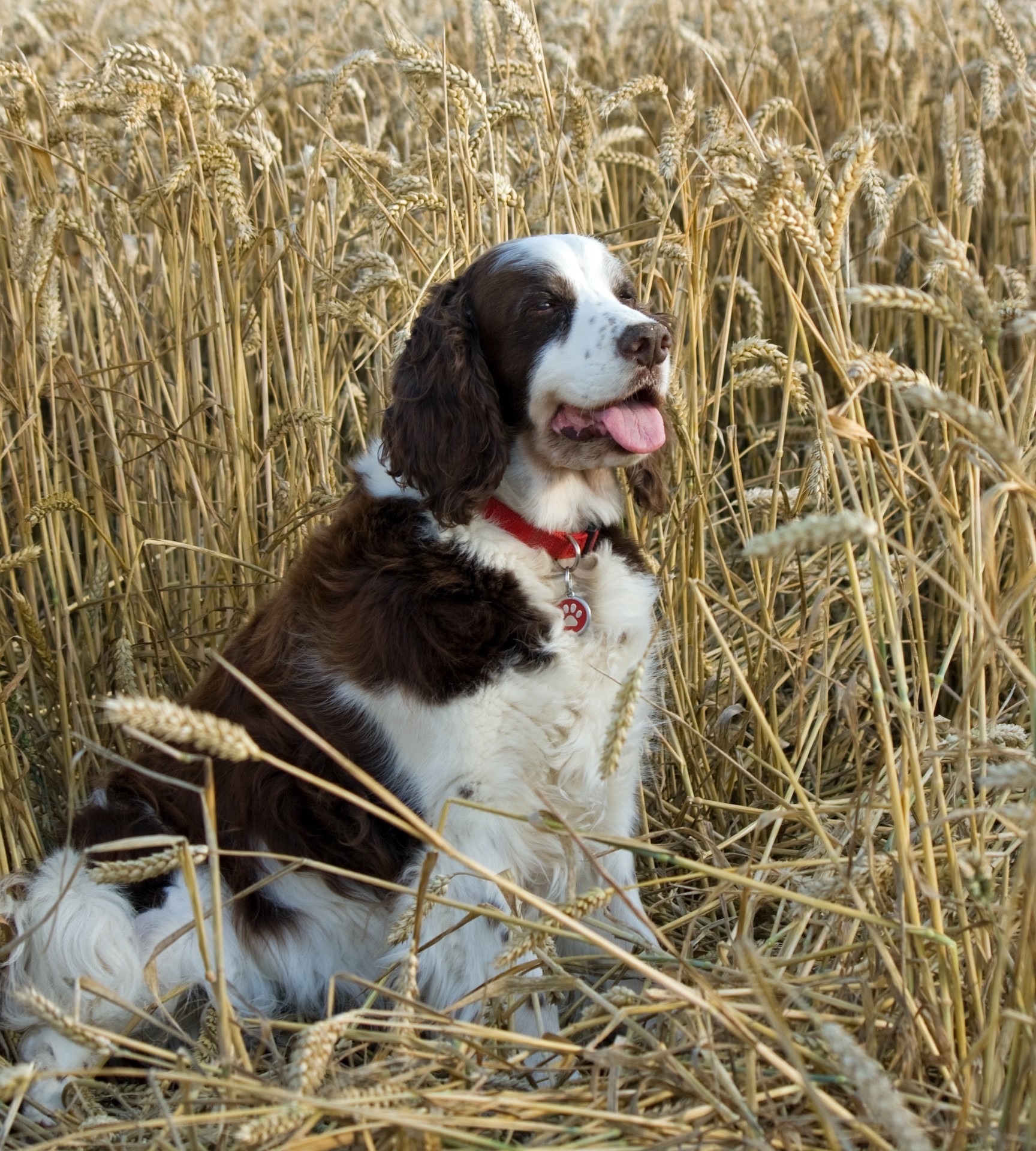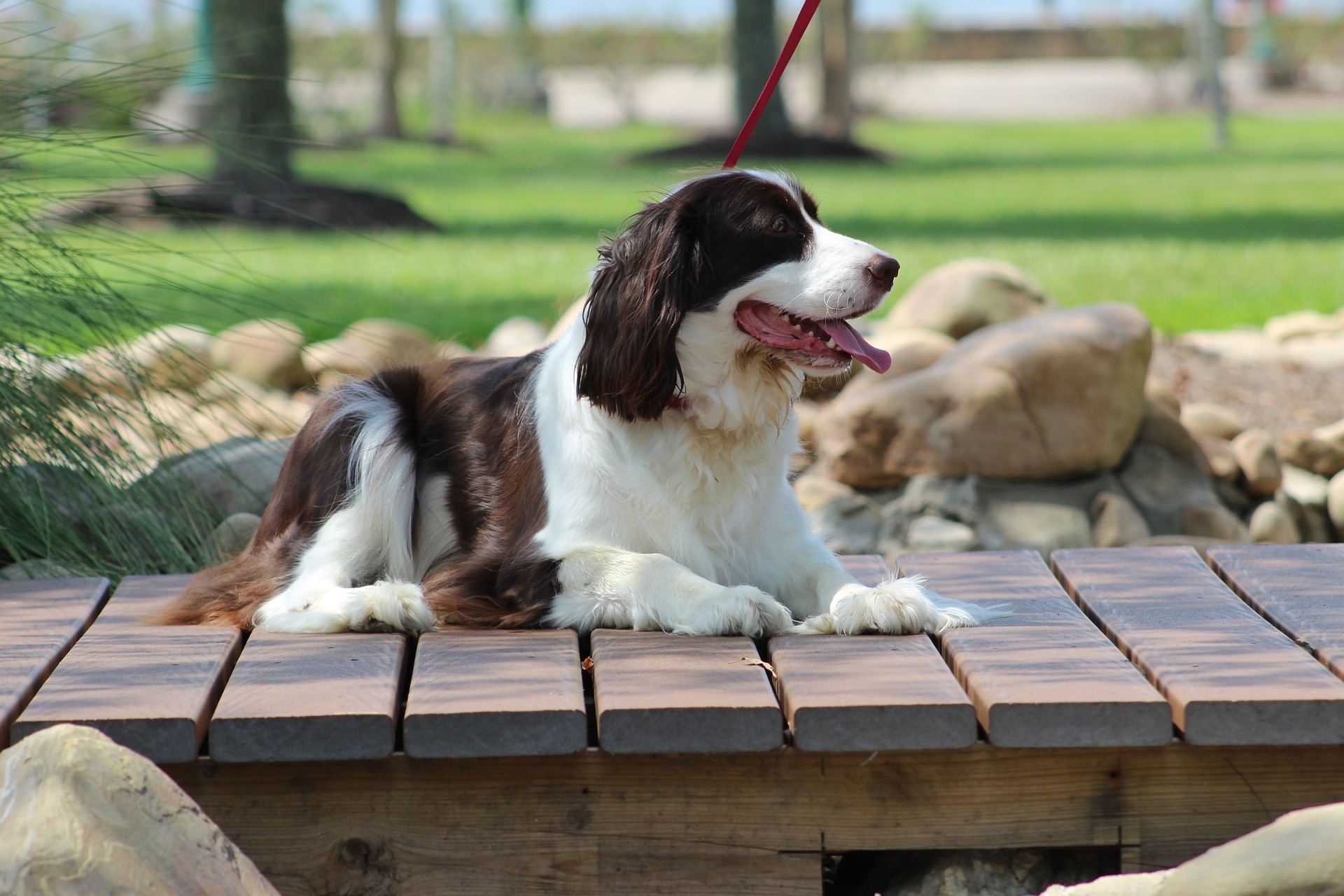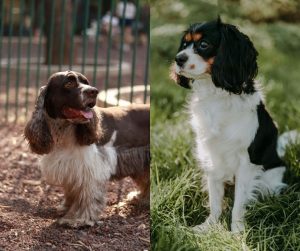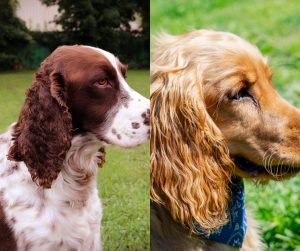The English Springer Spaniel, a breed renowned for its agility, intelligence, and affable nature, exists in two distinct types: bench and field.
While they share common heritage, the bench Springer, often seen in show rings, and the field-bred Springer, designed for work in the field, exhibit noticeable differences.
The bench type is celebrated for its beauty and conformation to breed standards, with a well-groomed appearance, longer coat, and docked tail, making it a frequent star at dog shows.
Comparatively, the field Springer is bred for performance, possessing a leaner build, shorter and more manageable coat, and an energetic temperament that serves it well in hunting and field activities.
These differences in traits affect not just their roles but also the care they require.
A bench Springer may demand regular grooming to maintain its lush coat, whereas the field Springer’s coat is more low-maintenance, reflecting its active outdoor lifestyle.
Moreover, their temperaments align with their respective duties; the bench type might display a more composed demeanor, and the field variety showcases a boundless energy that necessitates plenty of exercise.
When selecting an English Springer Spaniel, prospective owners should consider these distinctions, as each type provides a unique blend of companionship and utility.
Let’s take a look at the English Springer Spaniel bench vs field comparison.
Key Takeaways
- Bench Springers excel in conformation with longer coats and a composed demeanor, while field Springers are agile and energetic workers with shorter coats
- Owners must tailor care, particularly grooming and exercise, to suit the Springer type they have
- Differences in physical characteristics and temperament between bench and field Springers are significant, reflecting their respective roles in show rings and outdoor pursuits
Understanding the Breed
When delving into the English Springer Spaniel, a breed rich in history and diversity, one will find fascinating differences that distinguish the field types from those bred for the show ring. These representatives of a longstanding canine tradition have adapted well to various roles, from companions to skilled working dogs. The English Springer Spaniel dog breed is closely related to the Welsh Springer Spaniel, Cocker Spaniel, and Cavalier King Charles Spaniel. They are all English breeds from the spaniel breed group.
Historical Background
The English Springer Spaniel has its roots deeply planted in Great Britain and shares a lineage with the Cocker Spaniel, both descending from the original spaniels of Spain.
The breed developed into its own entity, with a keen aptitude for flushing and retrieving game in the field. Over time, English Springer Spaniels split into two distinct types:
- Field-bred Spaniels: Developed for their working ability in active hunting.
- Bench (Show)-bred Spaniels: Bred with emphasis on conformation to breed standards for the show ring.
This branching was not due to an official split, but rather a natural evolution based on the roles they were bred to perform.
Breed Standard Traits
The physical and temperamental traits that define the English Springer Spaniel can vary between the field and bench types. Here’s a brief rundown of their primary characteristics:
Field Spaniel:
- Coat: Short, less dense, and easier to maintain.
- Ears: Set higher and less pendulous.
- Size: Typically lighter and more streamlined, built for agility.
Bench Spaniel:
- Coat: Longer, with feathering that requires regular grooming.
- Ears: Characteristically longer and set low.
- Size: Often larger and more substantial in bone structure, exhibiting a regal stature that meets show standards.
While they share a common breed name and an affectionate nature, English Springer Spaniels bred for the field and bench are distinguished by their physical adaptations. These traits reflect their breeding purpose while maintaining the breed’s trademark friendliness and spirit.
Physical Characteristics
When distinguishing between Bench and Field English Springer Spaniels, one can notice stark differences in their physical characteristics, from their coats to the shape of their bodies.
Coat and Coloring
Bench-bred Spaniels often sport a thick, luxurious coat with considerable feathering on their legs and ears. Their coats come in two principal color patterns: black and white or liver and white. Some show a beautiful liver roan shading, which is a mix of colored and white hairs.
The Field Spaniels, in contrast, have a shorter, coarser coat that’s less prone to matting, requiring less grooming.
Body Structure
The Bench Spaniel’s physique is on the heavier side, with a deep chest and a body that’s slightly longer than the dog’s height at the shoulders.
By contrast, Field Spaniels display a more athletic build, suited for agility and endurance in the field. They tend to be more streamlined with a balance between strength and speed, ideal for their intended role as working dogs.
Tail and Ears
One can’t miss the distinctive docked tail of a Bench Springer, a common practice to adhere to breed show standards. Their ears are also typically set at eye level, framing their faces with lush feathering.
Field-bred Springers usually keep their tails full-length, adding to their agile silhouette, and their ears are set to complement their practical, outdoor lifestyle.
Temperament and Behavior
In understanding the English Springer Spaniel, one must consider the distinct temperaments between the bench and field types, which shape their behavior and energy levels. These differences are key in determining their suitability as family dogs and companions.
Typical Disposition
Bench Springer Spaniels are often more relaxed and composed by nature. They are bred to have a temperament that allows them to thrive in the show ring, which means they’re accustomed to being handled by judges and being around many dogs.
- Known for patience and a tranquil demeanor
- Ideal for families seeking a lower-energy companion
On the other hand, Field Springer Spaniels are selectively bred for their working capabilities, which includes a more independent and energetic temperament.
- High energy levels necessitate regular, vigorous exercise
- Thrive in an environment where they can be mentally and physically engaged
Social Characteristics
Bench-bred Springers, with their calm temperament, tend to be wonderful with children and integrate seamlessly into family life.
- Gentle and sociable with family members
- Generally good with other pets and dogs when properly introduced
Field-bred Springers, possessing an energetic and driven disposition, typically excel in active families. They can be fantastic playmates for kids who enjoy outdoor adventures.
- Strong drive to work alongside their human companions
- May remain more focused in the presence of wildlife or during outdoor activities
Comparing Bench and Field Lines
Distinguishing between the Bench and Field lines of the English Springer Spaniel reveals two variations bred with distinct purposes: show and hunting. One’s a polished show dog, the other, a rugged hunting companion. Both share the same breed name, but they are tailored to excel in very different environments.
Bench Show Qualities
Bench dogs, bred primarily for conformation shows, boast an appearance that aligns with strict show standards. These dogs have:
- Coats: Longer, with heavier feathering
- Tail: Often docked to complement their overall balance and conformation
- Physique: A sturdy build, with deep chests and proportions slightly longer in body than height at the shoulders
- Temperament: Calm and friendly, these spaniels charm judges and audiences alike
They require regular grooming to maintain their luxurious coat and showcase their best selves in the show ring.
Field Bred Qualities
Conversely, Field bred English Springer Spaniels are the quintessential hunting dogs. Key attributes include:
- Coat: Shorter, wavier, and more manageable, suited for the outdoors
- Ears and Lips: Both are shorter to minimize snagging in underbrush
- Body Shape: Typically longer than tall, built for agility and endurance
- Weight: Lighter, falling between 35 and 45 pounds, making them swifter on their feet
They thrive in active field trials and as working hunting companions, requiring minimal grooming compared to their bench counterparts.
Activity and Exercise Needs
In the life of an English Springer Spaniel, staying active isn’t just nice, it’s necessary. Whether they’re from bench or field lines, these dogs have a tank full of energy that needs regular filling and emptying. Let’s dive into what keeps them both physically happy and mentally sharp.
Exercise Requirements
Bench Springer Spaniels:
While they might look ready for showtime with their glossy coats and poised demeanor, bench Springer Spaniels still possess an eagerness for activity.
- Daily walks: 30 minutes to an hour, twice a day
- Free play: A fenced-in yard for safety sparked by a game of fetch
Field Springer Spaniels:
These pups are athletes born from a lineage of hunting and field work, brimming with vigor and agility.
- Daily vigorous exercise: Over an hour of running, hiking, or organized sports
- Hunting drills: Even if they’re not on the hunt, practice sessions keep their instincts sharp
Both types benefit enormously from structured exercise and a consistent routine to prevent boredom and the behavioral issues that can follow.
Training and Mental Stimulation
Regardless of their lineage, all Springer Spaniels boast a certain level of obedience and are fond of engaging their brains. When comparing English Springer Spaniel bench vs field, intelligence if definitely the same.
Bench Springer Spaniels:
Training often revolves around social behavior and basic obedience that make them a joy at dog shows and family gatherings. They typically enjoy:
- Basic commands: Sit, stay, come
- Gentle introduction to agility for fun and mental engagement
Field Springer Spaniels:
Born with a hunting heritage, they require a more intensive training regimen that satisfies their instinctual drive. They flourish with:
- Advanced obedience: Precision and responsiveness are key
- Agility courses: Mimic the field conditions with hurdles, weaves, and tunnels
Interactive play, like hide and seek with toys or scent work, keeps their minds as exercise-ready as their bodies.
Training sessions not only reinforce good behavior but are also a hidden form of exercise for both variations of this lovable breed.
Health and Grooming
When it comes to the well-being of English Springer Spaniels, two main areas demand attention: their health and the grooming practices that keep them looking their best. Whether they’re bouncing around the field or charming judges in the show ring, maintaining their health and cleanliness is paramount.
Common Health Concerns
English Springer Spaniels share some breed-specific health concerns that owners should be vigilant about. Here’s a quick rundown:
- Hips: Both bench and field Springers can suffer from hip dysplasia. Regular vet check-ups and maintaining a healthy weight can help manage this risk
- Eyes: Watch for signs of Progressive Retinal Atrophy (PRA) and other eye conditions common in the dog breed
- Ears: Their floppy ears require regular inspection as they are prone to ear infections. Keeping their ears clean and dry is essential
Grooming Best Practices
Grooming can be quite different for bench and field English Springer Spaniels due to their coat variations.
- Bench Springer Spaniel typically has a longer and thicker coat, which requires frequent grooming to avoid mats and tangles. They often have a lush coat that might catch burrs during a walk, so it’s essential to brush them out regularly.
Area Grooming Action Coat Brush several times a week Ears Clean weekly Eyes Wipe daily - Field Springer Spaniel, on the other hand, possess a shorter, wavier coat that is generally less prone to issues and requires minimal grooming compared to their bench counterparts. Even so, they should still be groomed to prevent any debris from outdoor activities becoming entangled in their coat
Area Grooming Action Coat Brush weekly Ears Check and clean weekly Eyes Wipe as needed
Grooming is more than just keeping them presentable; it’s an act of care that keeps an English Springer Spaniel healthy and happy.
It’s a time for bonding, for observing any changes that may warrant a vet visit, and for ensuring that they remain the energetic and affectionate companions they are known to be.
Breeders and Breeding
Choosing the right breeder and understanding the complexities of breeding are pivotal for potential English Springer Spaniel owners. They’re not just picking a pet; they’re selecting a part of their family for years to come.
Finding a Reputable Breeder
When searching for a breeder, one should look for individuals who demonstrate a profound understanding of the English Springer Spaniel breed, including recognition of the differences between the Field and Bench varieties. A reputable breeder:
- Is registered with a recognized kennel club, like the American Kennel Club (AKC)
- Provides a detailed history of their dogs and their pedigree
- Conveys clear health testing protocols for genetic conditions related to the breed
To ensure the breeder’s legitimacy, one can check for membership with breed-specific clubs such as the English Springer Spaniel Field Trial Association, which is sanctioned by the AKC to oversee the breed standard in the United States.
Considerations for Breeding
Breeding English Springer Spaniels should not be taken lightly. A responsible breeder considers the following points:
- The health and temperament of the dogs being bred to ensure they are good representatives of the breed
- The American Kennel Club dog breed standard, which provides guidelines for both Field and Bench varieties, should be adhered to maintain breed integrity
- Whether they are breeding Field-bred dogs, which may emphasize working abilities and stamina, or Bench-bred dogs, which are often bred for their conformation according to show standards
English Springer Spaniel in the Field
English Springer Spaniels bred for field work possess specific traits aimed at enhancing their performance in outdoor hunting activities. They show a remarkable combination of drive and responsiveness that makes them ideal companions for hunters.
Hunting Traits
The English Springer Spaniel exhibits a strong drive when hunting, showing both enthusiasm and stamina in the field. Their nose is highly adept at picking up scents, which makes them excellent at flushing game such as pheasant, woodcock, and quail. Once they’ve located the game, they will flush the bird out of its hiding place, enabling the hunter to take a shot.
- Nose: Superior scent-detecting abilities
- Flush: Excels at rousting game from cover
- Drive: Energetic and persistent in the pursuit of game
Working with Hunters
These spaniels are trained to work cohesively with hunters, responding to both verbal commands and whistle signals.
They possess the innate ability to retrieve game carefully, ensuring that the caught pheasant or goose is delivered gently to hand. This soft mouth trait is essential so that the game remains undamaged.
- Retrieve: Tenderly carries game back to the hunter
- Hunters: Builds a synergistic relationship with their human partners
When working with a field English Springer Spaniel, hunters can expect a companion that is both attentive to instruction and eager to carry out its duties.
Their intelligence, coupled with an eagerness to please, creates a harmonious hunting experience.
Remember, these talented spaniels thrive on positive reinforcement and a close bond with their human counterparts.
It’s the combination of their skillset and the shared trust with their handler that truly sets them apart in the field.

